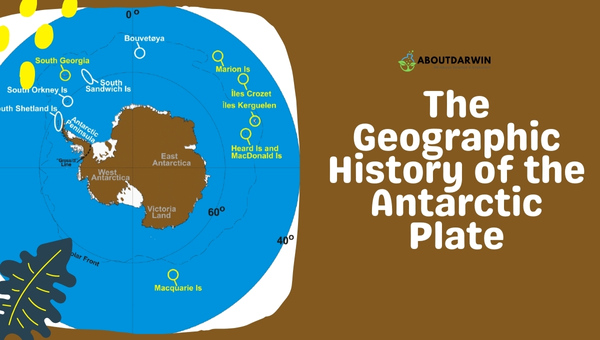Physical Address
304 North Cardinal St.
Dorchester Center, MA 02124
Antarctica, the southernmost continent, is not just a land of ice but also a dynamic geological marvel shaped by the Antarctic Plate. This massive drifting landmass plays a crucial role in the Earth’s tectonic activity, influencing everything from seismic events to climate patterns.
As the Antarctic Plate continues its slow journey, it reveals a complex history that intertwines with the breakup of the ancient Gondwana supercontinent.
The ongoing research into this plate’s movements promises to unlock secrets about our planet’s past and future, making Antarctica a focal point for geological exploration.
Contents
When thinking about the drifting continents, Antarctica’s story never fails to pique interest. Understanding the geographic history of the Antarctic Plate is essential to comprehend its global significance fully.

The Antarctic Plate comprises the whole of Antarctica and goes beneath the Southern Ocean. The Pacific, South American, African, Australian, and Indian plates border it. Antarctica used to be part of the Gondwana supercontinent around 550 million years ago.
Over time, other continents gradually separated until Antarctica reached its current position.
| Rank | Tectonic Plate Name | Area (square kilometers) |
|---|---|---|
| 1 | Pacific Plate | 103 million |
| 2 | North American Plate | 75 million |
| 3 | Eurasian Plate | 67 million |
| 4 | African Plate | 61 million |
| 5 | Antarctic Plate | 20.3 million |
The breakup of Gondwana played a crucial role in shaping the Earth’s landmass and oceanic composition. Some vital points in the breakup process include:
One of the most significant periods in Antarctic history was the Eocene-Oligocene boundary, which occurred around 34 million years ago. It marked the dawn of the modern Antarctic ice sheet, a defining feature of today’s continent.
During this period, there was a substantial drop in global temperatures, leading to the expansion of ice sheets and glaciers both on and around the continent.
Antarctica’s climate wasn’t always chilly and sterile. The fossils discovered on the continent show evidence of temperate rainforests and diverse wildlife. However, the formation of the Antarctic Circumpolar Current dramatically changed the continent’s climate.
Here are a few key moments:
The Antarctic Plate, although isolated today, continues to shift and evolve just like the other continents. Studying and understanding its history is essential to anticipate impacts on the global climate and predict future landmass changes. Its significance goes beyond mere geography and extends to our comprehension of Earth’s geological past and environmental future.
Also Read: Three Types of Rocks That Make Up Our Earth’s Crust
The Antarctic Plate is a major tectonic plate that encompasses the continent of Antarctica and extends beneath the surrounding Southern Ocean. It plays a crucial role in the geological dynamics of the region, influencing climate, landforms, and even volcanic activity.
Over millions of years, the movements of the Antarctic Plate have contributed to significant changes in Earth’s geography, including the formation of mountain ranges and ice sheets.
This plate is essential for comprehending both past and future geological developments on our planet.
The Antarctic Plate is a significant tectonic plate that underlies the continent of Antarctica and extends into the surrounding Southern Ocean.
It is the fifth largest tectonic plate on Earth, covering an area of approximately 60.9 million square kilometers. The plate is characterized by its interactions with several neighboring tectonic plates, which include both divergent and convergent boundaries.
These interactions are crucial in shaping the geological features of Antarctica, such as the Transantarctic Mountains and various rift zones. The Antarctic Plate’s movements also contribute to geological phenomena like earthquakes and volcanic activity.
Boundaries:
Geological Features:
Significance: Understanding the Antarctic Plate is crucial for insights into global tectonic processes and Antarctica’s geological history.
The dynamics of the Antarctic Plate is essential for comprehending not only Antarctica’s geological history but also its role in global tectonic processes.
The Antarctic Plate represents a significant aspect of Earth’s geological framework, showcasing the dynamic nature of tectonic movements. This drifting landmass not only shapes Antarctica’s icy landscape but also influences global climatic patterns and marine ecosystems.
The Antarctic Plate’s history, including its role in the breakup of Gondwana and the formation of the modern ice sheet, is essential for predicting future geological changes.
As we continue to study this unique region, we gain valuable insights into our planet’s past and its ongoing evolution.